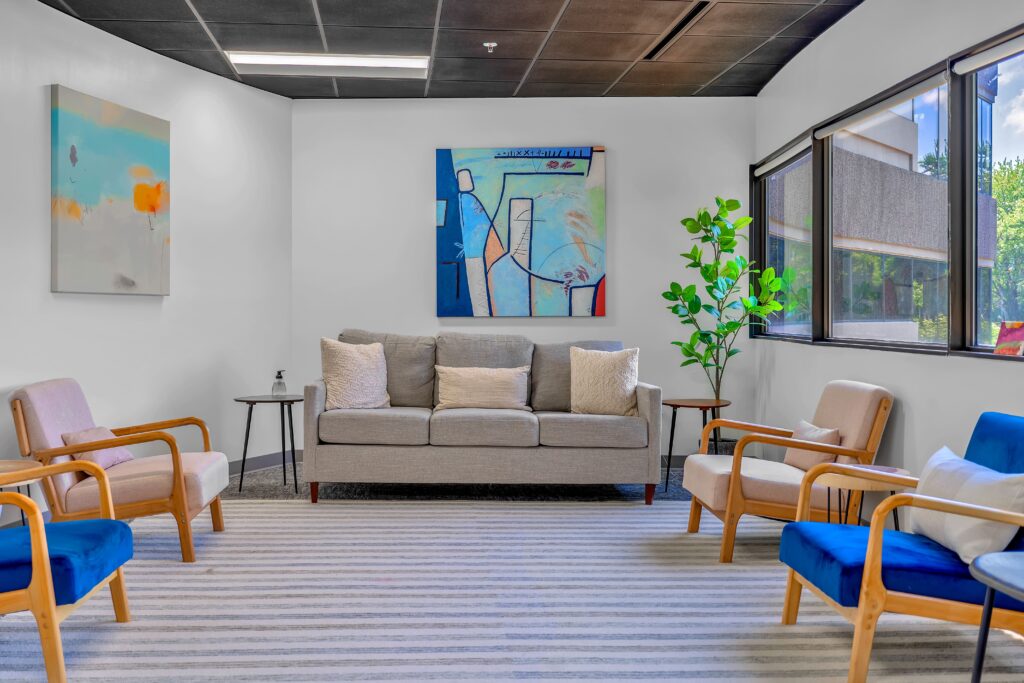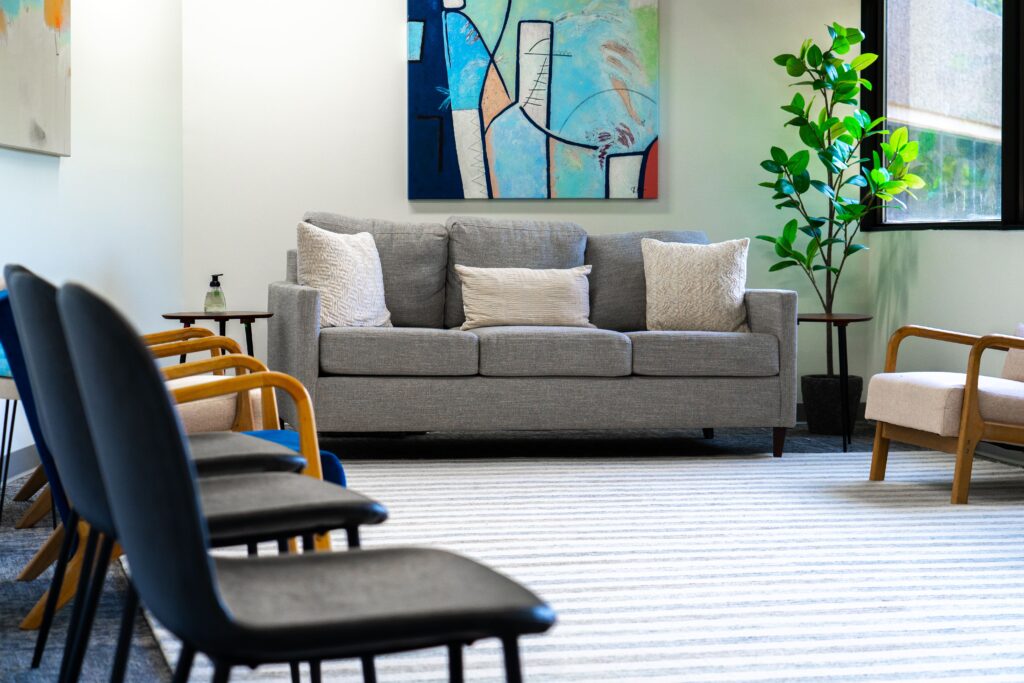If you or a loved one is struggling with severe mental health issues in Georgia, understanding the 1013 form can be crucial. This form is a legal mechanism used to ensure individuals in crisis receive the immediate care they need. In this article, we’ll explore what a 1013 form is, its purpose, and what to expect during the process. We’ll also discuss Georgia’s mental health statistics, the benefits of treatment after a 1013, and how mental health treatment works in Georgia.
If you or a loved one are struggling with a mental health disorder, our residential mental health treatment in Georgia can help, call us today or visit our admissions page to access the help and treatment you deserve!
What is a 1013 in Mental Health?
A 1013 form is an official document used in Georgia to authorize the involuntary transportation and evaluation of individuals experiencing a mental health crisis. This form is typically utilized when someone with mental illness poses a substantial risk of imminent harm to themselves or others. A licensed physician, psychologist, clinical social worker, or other qualified mental health professional completes the form. Once filled out, it enables the individual to be transported to an emergency receiving facility for immediate evaluation and necessary care.
Georgia Mental Health Statistics
Understanding the prevalence of mental health issues in Georgia underscores the importance of the 1013 form. According to the Georgia Department of Behavioral Health and Developmental Disabilities (DBHDD), nearly 1 in 5 adults in Georgia experiences a mental health condition each year. Suicide is the 10th leading cause of death in the state, with 1,569 suicides in 2021. NAMI reports that 1,405,000 adults in Georgia have a mental health condition, and 44.3% of adults reported symptoms of anxiety or depression in February 2021. Additionally, 336,000 adults have a serious mental illness, and 104,000 youths aged 12-17 suffer from depression.
What is the Purpose of a 1013 Form In Georgia?
The primary purpose of a 1013 form is to provide immediate protection. While also care for individuals in mental health crises who cannot seek help voluntarily. It ensures their safe transportation to a facility for evaluation and necessary treatment. This legal intervention aims to stabilize the individual, prevent harm, and provide a pathway to further mental health care. By addressing the immediate crisis, a 1013 form ensures the safety and well-being of the individual and those around them. Offering access to essential mental health support during a critical period.
What Happens Once a 1013 Form Has Been Submitted?
Once a 1013 form is submitted, law enforcement or emergency medical services transport the individual to an emergency receiving facility. This process initiates a 72-hour period during which several critical steps occur to address the individual’s mental health needs.
- Transportation: The individual is taken to a designated mental health treatment facility.
- Initial Assessment: Upon arrival, mental health professionals evaluate the individual’s mental state, crisis level, and risk factors, while informing them of their legal rights.
- Admission and Crisis Stabilization: Additionally, if deemed a harm to themselves or others, staff admit the individual and take immediate steps to stabilize their condition.
- Evaluation: A thorough psychiatric evaluation is conducted within the 72-hour period to determine the appropriate level of care.
- Treatment Planning: Based on the assessment, a personalized treatment plan is created to address the individual’s specific needs.
- Discharge or Transition: Furthermore if the person is no longer a threat, they can voluntarily request discharge.
Alternatively, if they remain a danger to themselves or others, they may transition into a treatment program, either voluntarily or involuntarily.
What Can I Expect From a 1013?
Initiation of a 1013 involves transporting the individual to a designated facility for a thorough evaluation, ensuring safety and support while protecting the individual’s rights throughout the process. Upon arrival, they will receive immediate care from mental health professionals. These professionals focus on understanding their needs and planning the next steps for treatment.
Here’s what to expect from a 1013:
- Dignity and Respect: Healthcare professionals have a duty to treat individuals with dignity and respect.
- Confidentiality: Despite the involuntary nature of the admission, the individual retains privacy rights and protections under HIPAA.
- Prioritization of Well-Being: The primary goal of a 1013 is to ensure the individual receives the necessary care in a safe, secure, and supportive environment.
- Collaborative Approach: Encouraging individuals to participate in developing their treatment plan ensures it meets their needs and provides the required mental health services.
This approach aims to stabilize the individual while respecting their rights and ensuring they receive appropriate, compassionate care.
What Happens Once a 1013 Has Been Completed?
After completing a 1013 hold, the process involves several steps to ensure appropriate care:
- Re-evaluation and Review: Near the end of the 72-hour hold, mental health professionals re-evaluate the individual’s condition to determine if continued treatment is necessary.
- Inpatient Treatment: If the individual still poses a significant risk to themselves or others. They may admit them for inpatient treatment. This involves a structured program with 24/7 monitoring and support.
- Transition to Outpatient Care: If inpatient care is no longer required but continued treatment is necessary. The individual may be referred to a lower level of care such as a partial hospitalization program (PHP), intensive outpatient program (IOP), or Outpatient Program.
- Release with a Treatment Plan: If the individual is stable and not at risk, they may discharge the patient with a comprehensive treatment plan. Including referrals to outpatient services and follow-up care to ensure ongoing support.
The goal is to provide the most appropriate level of care. While also addressing the individual’s mental health needs while ensuring their safety and well-being.
Benefits of a Treatment After a 1013
Receiving treatment after a 1013 hold can be transformative, offering numerous benefits that promote long-term mental health and stability.
- Professional Support: Access to professional mental health services ensures individuals receive comprehensive care. Including therapy, medication management, and support groups, which are crucial for managing their condition effectively.
- Structured Recovery: Treatment provides a structured environment that fosters recovery. Regular therapy sessions help individuals explore their thoughts, emotions, and behaviors with professional guidance. Ensuring they are not facing their challenges alone.
- Symptom Management: Ongoing treatment helps manage symptoms, address underlying issues, and develop coping strategies. This reduces the risk of relapse and future crises, promoting overall well-being.
- Improved Quality of Life: By gaining insight into their condition and developing healthier habits. Individuals can significantly improve their quality of life. Continued treatment supports mental health stability and fosters personal growth.
- Access to Resources: Treatment programs offer access to various resources and aftercare support. Helping individuals build a strong support network essential for long-term recovery.
How Mental Health Treatment in Georgia Works
In Georgia, the Department of Behavioral Health and Developmental Disabilities (DBHDD) coordinates mental health treatment and oversees a wide range of services and programs. Treatment begins with a comprehensive assessment to develop a personalized care plan tailored to individual needs. Available treatments include:
- Inpatient and Outpatient Services: Offering varying levels of care to accommodate different needs.
- Therapies: CBT Therapy, Somatic Therapy, Individual, group, and family therapy sessions provide structured support and address specific mental health issues.
- Medication Management: Ensuring appropriate use of medications to manage symptoms effectively.
- Holistic Therapies: Including music therapy, pet therapy, red light therapy, and biosound therapy, which support mental well-being through diverse approaches.
- Community-Based Support: Providing resources and support within the community to aid long-term recovery.
The focus of mental health treatment in Georgia, and at Valor Behavioral Health, is on comprehensive care that promotes recovery, resilience, and improved mental well-being. Aftercare planning is also crucial, helping individuals maintain stability and continue their progress post-treatment.
Call Us For Support
Understanding what a 1013 in Georgia is, the process, and the resources available. Can make a significant difference in managing mental health crises. Valor Behavioral Health is here to help you navigate these challenges and provide the support needed for a healthier, more stable future.
If you or someone you know is struggling with a mental health crisis, don’t hesitate to reach out for help. Our team in Atlanta, Georgia, is dedicated to providing compassionate and comprehensive mental health care. Call us today or take a look at our admissions page to learn more about our services and how we can support you on the path to recovery.













